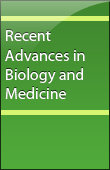


Tooth extraction can cause 1.5-2 mm (vertical) and 40-50% (horizontal) alveolar bone resorption to occur for 6 months after extraction and will continue if it is not treated. Alveolar bone resorption will affect the retention, stability, and comfort in the use of dentures because adequate alve- olar bone volume and structure of alveolar ridge are very important to obtain optimal function and prosthetic reconstruction. Currently, there are techniques and materials that can be used to minimize bone resorption. Preservation of alveolar ridges with crab shell-based hydroxyapatite can minimize bone resorption because it has good biocompatibility, osteoconduction, and osteoinduction. The aim of this study is to prove the effectiveness of hydroxyapatite from crab shells in increasing the area of bone trabeculae, transforming growth factor-beta 1(TGF-β1), and alkaline phosphatase (ALP). This laboratory research is an experimental laboratory work with a post-test group design. Crab shell-based hydroxyapatite gel (Portunus pelagicus) was given after the post-tooth socket extraction of the left lower central incisor of Wistar rats, observ- ing the area of trabeculae, TGF-β1, and ALP on the 14th day and 28th day. Hydroxyapatite is made from the calcination process of crab shells using a furnace at 1000°C for 2 h followed by sifting to powder. The powder is added with carrageenan and distilled water so that it becomes a gel preparation. The results of this study were analyzed using the One-way ANOVA test with IBM SPSS version 20. The area of trabeculae, TGF-β1, and ALP between the control group and the treatment group showed p<0.05, which means there were significant differences between the groups. The study showed that hydroxyapatite from the crab shell (P. pelagicus) can increase the area of trabeculae, TGF-β1, and ALP in the post-extraction socket of Wistar rat’s teeth.